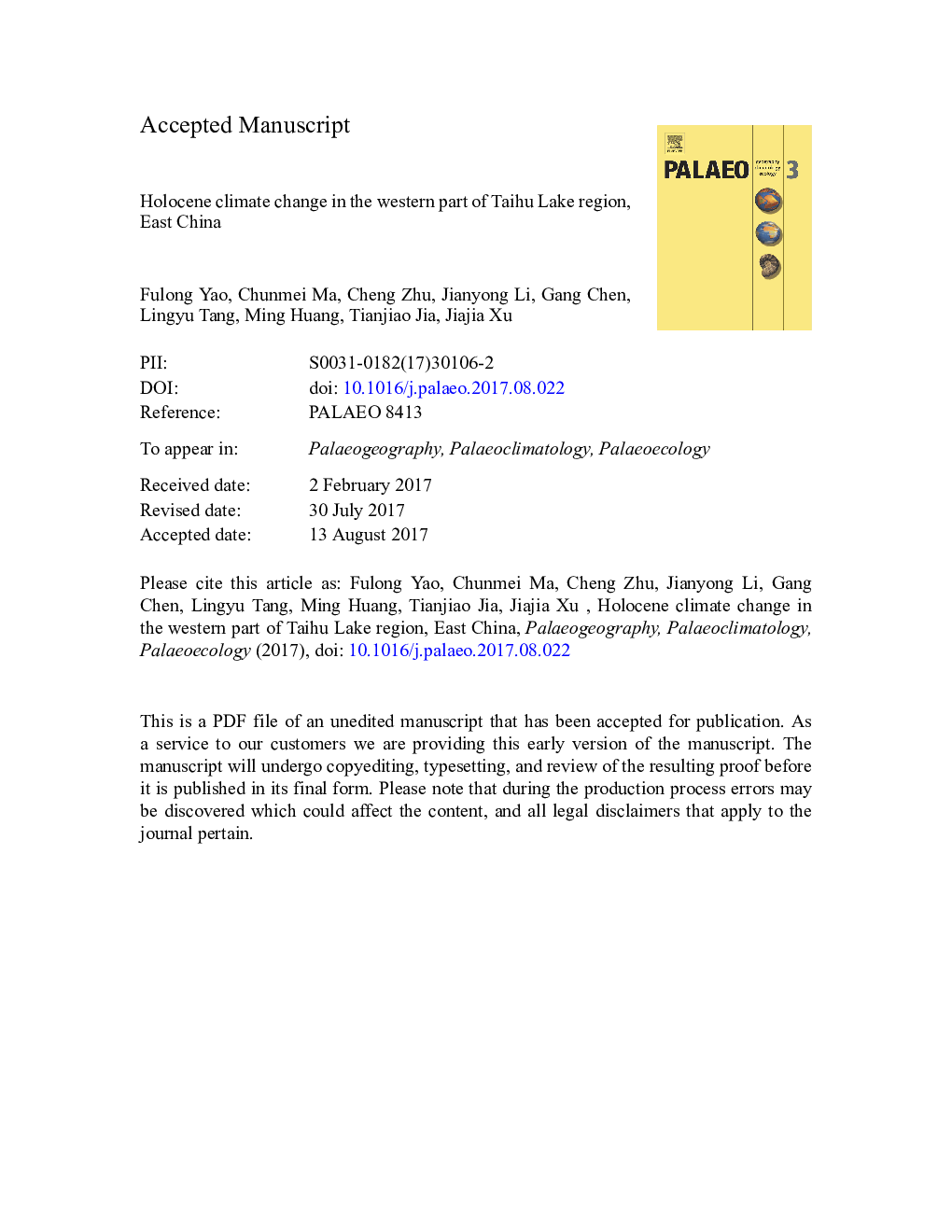| کد مقاله | کد نشریه | سال انتشار | مقاله انگلیسی | نسخه تمام متن |
|---|---|---|---|---|
| 8868745 | 1622107 | 2017 | 40 صفحه PDF | دانلود رایگان |
عنوان انگلیسی مقاله ISI
Holocene climate change in the western part of Taihu Lake region, East China
دانلود مقاله + سفارش ترجمه
دانلود مقاله ISI انگلیسی
رایگان برای ایرانیان
موضوعات مرتبط
مهندسی و علوم پایه
علوم زمین و سیارات
فرآیندهای سطح زمین
پیش نمایش صفحه اول مقاله

چکیده انگلیسی
The Taihu Lake basin is one of the most sensitive areas to climate change in the East Asian summer monsoon (EASM) influenced region. There are significant differences regarding the interpretation of climate history for this area during the Holocene due to a lack of high-resolution paleoclimate records. To better understand this scientific issue, here we provide a new record of Holocene climate change from the western part of Taihu Lake region, East China. A 4-m-depth profile from Gaochun has provided a 13,200-year record of climate change. Holocene climate change was reconstructed for the western part of Taihu Lake area based on various proxy records including pollen, charcoal, degree of humification (DOH), and loss on ignition (LOI) from the Gaochun site. The results indicate that climate during the late Pleistocene (13,200-10,700 cal yr B.P.) and early Holocene (10,700-8000 cal yr B.P.) was warm and humid, alternated with several cold and dry intervals. The late Pleistocene and early Holocene was a transitional period from cold-dry to warm-wet climates. The middle Holocene (8000-4400 cal yr B.P.) was still warm and humid, with a relatively stable climate. The period between 8000 and 5300 cal yr B.P. was the Holocene climate optimum (HCO). During the late Holocene (4400-0 cal yr B.P.), the climate was cool but still humid. In addition, climate change at the western part of Taihu Lake during the late Pleistocene and Holocene was unstable, containing several short-term climate events such as Younger Dryas (YD), 8.2 ka, and 4.2 ka events. These abruptly occurred climate events were indicated by various paleoclimatic proxy indicators, and can be compared with related records from other regions. Our findings suggest that the EASM strength was strongest during the middle Holocene between 8000 and 5300 cal yr B.P. which can be depicted as the period of HCO.
ناشر
Database: Elsevier - ScienceDirect (ساینس دایرکت)
Journal: Palaeogeography, Palaeoclimatology, Palaeoecology - Volume 485, 1 November 2017, Pages 963-973
Journal: Palaeogeography, Palaeoclimatology, Palaeoecology - Volume 485, 1 November 2017, Pages 963-973
نویسندگان
Fulong Yao, Chunmei Ma, Cheng Zhu, Jianyong Li, Gang Chen, Lingyu Tang, Ming Huang, Tianjiao Jia, Jiajia Xu,